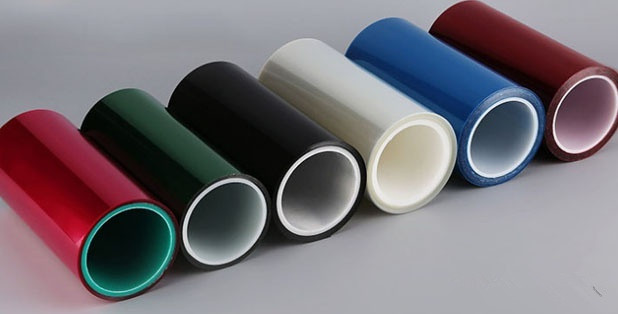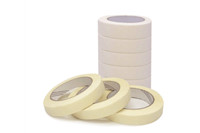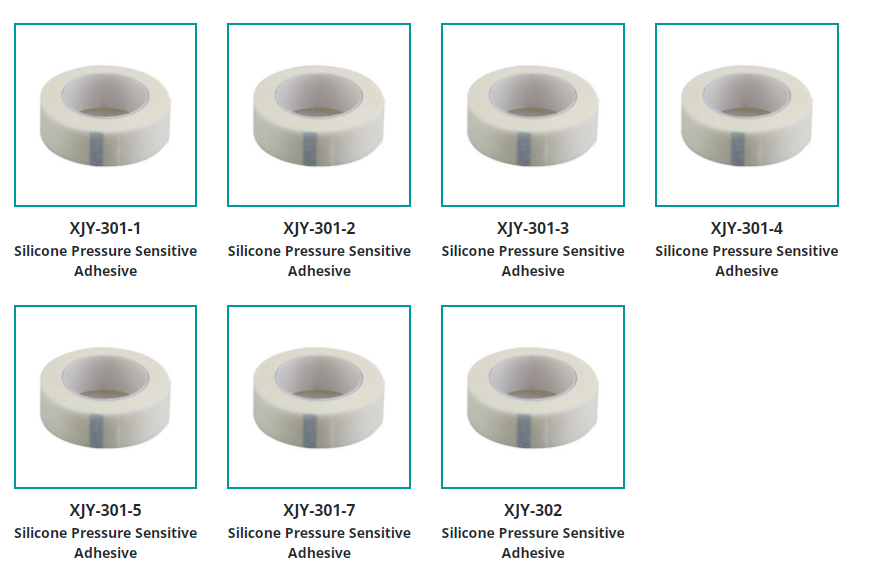There are many different types of pressure-sensitive adhesives, but silicone PSA has various applications because of its excellent performance properties. But why silicone PSA is so good?
|   |
What is pressure-sensitive adhesive?
Pressure-sensitive adhesive is a kind of adhesive that is sensitive to pressure, and is a kind of material that can dry at room temperature, and has dry viscosity and permanent viscosity. Pressure-sensitive adhesive tapes are the main use of pressure-sensitive adhesives.
The pressure-sensitive tape can be firmly adhered to the surface of many substrates by applying light pressure with fingers or palms. It can be peeled off from the surface of the adherend without leaving any residue. In all aspects of people's clothing, food, housing and transportation, pressure-sensitive tape has a very wide range of uses.
![]()
Comparison chart of the performance of different pressure-sensitive adhesives
Why silicone PSA is better?
The main components of silicone PSA, there are mainly rubber, acrylic, polyurethane, and silicone adhesive, and their respective characteristics are shown in the following table.
| Typical Properties | Silicone PSA | Acrylic PSA | Polyurethane PSA | Rubber PSA |
| High-temperature resistance | 200-250℃ | 150℃ | 150℃ | 100℃ |
| Low-temperature resistance | -50℃ | 0 | -40℃ | 0 |
| Weather resistance | Excellent | Good | Good | Good |
| Adhesion to low-performance surfaces | High | Low | Low | Low |
Comparison table of different pressure-sensitive adhesive properties
Application of Silicone PSA
In detail, compared to other types of pressure-sensitive adhesives, silicone pressure-sensitive adhesives have the following properties and applications.
First
1. High and low-temperature performance resistance (the only organic adhesives that can be used in the wide temperature range of -65 to 300°C)
2. Good weather resistance
3. High peel adhesion to low surface energy interfaces (Teflon, silicone rubber)
Therefore, silicone PSA can be used as high-temperature tape, low-temperature tape, and for the adhesion of low-surface-energy materials such as silicone rubber keys.
Second
1. Excellent electrical properties
2. Non-corrosive to metals
3. Non-irritating to skin
4. Chemical resistance
Therefore, silicone pressure-sensitive adhesive can be used as electrical insulation tape, plating masking tapes and medical tape.
Third
1. Excellent venting properties
2. Good curing effect
3. Good workability
4. Good resistance to water solvent evaporation
5. Excellent leveling properties
6. Low residue on the surface of the object to be bonded
Silicone PSAs can therefore be used as protective films for electronic screens and automotive glass. This is currently the most widely used and researched area of silicone pressure-sensitive adhesives.
![]()
![]()
![]()

Curing method of silicone pressure-sensitive adhesive
Silicone pressure-sensitive adhesive is mainly composed of silicone rubber and MQ resin. Silicone rubber is the film-forming substance of silicone pressure-sensitive adhesive. It has a large molecular weight and provides high enough cohesive strength for silicone pressure-sensitive adhesive. MQ silicone resin has a spherical "core-shell structure" and is the bonding component of silicone pressure-sensitive adhesives.
According to the vulcanization method, silicone pressure-sensitive adhesives are mainly divided into three types: peroxide vulcanization type, addition vulcanization type and UV light curing type.
In addition, silicone pressure-sensitive adhesives such as electron beam radiation curing and room temperature vulcanization are also under continuous development.
The respective characteristics of silicone PSA with different vulcanization methods are as follows.
1. The benzoyl peroxide (BPO) vulcanized silicone PSA
It has a high vulcanization temperature (150°C) and a slow vulcanization speed, so this type of pressure-sensitive adhesive is not suitable for substrates with poor temperature resistance.
For some high-temperature resistant substrates, this type of silicone pressure-sensitive adhesive can be used, such as high-temperature resistant tape based on polyimide (PI) film, commonly known as gold finger tape, which is a silicone pressure-sensitive adhesive vulcanized with BPO evenly. It is produced by coating on the high-temperature resistant substrate PI film.
2. Addition vulcanization silicone PSA
It is mainly characterized by low vulcanization temperature (100-130℃), fast curing speed, and no by-products during the reaction process, so it can be applied to substrates with poor temperature resistance, which is mainly used in protective films.
However, since the addition vulcanization silicone adhesives are catalyzed by the platinum catalyst, this type of catalyst encounters organic compounds containing N, P, S and other elements and ionic compounds containing Sn, Pb, Hg, Bi, As and other metals May be "poisoned" and inactivated, so avoid contact with these substances during production, transportation, and use.
3. UV light-curing silicone PSAs
It is a new type of pressure-sensitive adhesive system. It does not contain or contain a very small amount of solvent. It has no pollution, low energy consumption, and high efficiency. It can meet the use of some substrates that are very sensitive to temperature.
Due to the high cost and relatively immature technology, this type of silicone pressure-sensitive adhesive has not been generally accepted by the market, but as the most important trend of silicone pressure-sensitive adhesive in the future, it has attracted more and more researchers' attention.
XJY--First choice supplier of silicone PSAs
Mainstream supplier of silicone pressure sensitive adhesive
| Company Name | Dow Coring | Wacker | ShinEtsu | MOMENTIVE | KCC | XJY Silicones |
| Country | USA | German | Japan | USA | South Korea | China |
XJY-301/302 silicone PSA
It is a colorless and transparent viscous liquid, which can be used for various adhesive tapes with light pressure sensitive adhesive, has good shear and tack properties, and has unique features of silicone such as aging resistance, good resistance to high and low-temperatures, no residue after stripping for crepe paper, PET film and other adhesion tapes, has the good adhesive ability.


